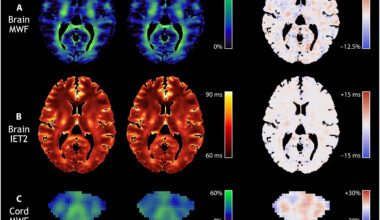Check out some of the papers that were published by DMCBH members in the past few weeks:
Joanne Matsubara: “Müller cell degeneration and microglial dysfunction in the Alzheimer’s retina”
This study found that Müller cells (pivotal cells in the retina that support neurons) degenerate in the Alzheimer’s diseased retina and that microglial cells, although more numerous, do not appear to function to clear amyloid beta in the Alzheimer’s diseased eye. Overall, dysfunction of Müller and microglial cells are key features of the Alzheimer’s diseased retina.
Noah Silverberg: “Early Postinjury Screen Time and Concussion Recovery”
Too much screen time can slow children’s recovery from concussions, but banning screen time is not the answer either. The amount of time spent in front of screens during the early recovery period made little difference to long-term health outcomes. After 30 days, children who suffered a concussion or another type of injury reported similar symptoms, regardless of their early screen use. Researchers suggest using the same approach as with other activities, which is moderation.
Teresa Liu-Ambrose: “Effect of Exercise Training or Complex Mental and Social Activities on Cognitive Function in Adults With Chronic Stroke”
A stroke doubles one’s risk for dementia. Stroke-related cognitive deficits are associated with reduced functional independence, institutionalization, reduced quality of life, and death. Therefore, stroke survivors need interventions to promote cognitive function and to prevent dementia. This study found that exercise can meaningfully improve cognitive function in adults with chronic stroke.
Miriam Spering: “Tracking and perceiving diverse motion signals: Directional biases in human smooth pursuit and perception”
In this study, we examined how perception and pursuit process motion signals within an object and integrate them with object motion signals. Whereas smooth pursuit eye movements consistently followed the average of internal and object motion, perceptual biases were inconsistent across observers. Most observers showed a contrast bias in perception, but a few observers showed an assimilation bias. Interestingly, biases in perception and pursuit were correlated, showing that observers with a larger assimilation bias in pursuit tended to have a similar assimilation bias in perception. These results reveal a complex relationship between direction perception and smooth pursuit when processing motion signals at different spatial scales.
Helen Tremlett: “Low socioeconomic status was associated with a higher mortality risk in multiple sclerosis”
The relationship between socioeconomic status (SES) and mortality among persons with multiple sclerosis (PwMS) is poorly understood. The association between neighbourhood socioeconomic status and risk of death may be due to a complex network of contributing factors; lower socioeconomic status has previously been associated with a higher risk of chronic and severe diseases or conditions. It may also restrict timely or appropriate healthcare and treatments. The results underscore the significance of making efforts to improve factors like economic stability, employment, and social protection for the most disadvantaged — to change outcomes such as risk of death for the most deprived and improve survival for those with MS.
Read a lay summary by Sharon Roman, a patient-partner working with Dr. Tremlett
Helen Tremlett: “Polypharmacy and multiple sclerosis: A population-based study”
One in four people with MS take five or more medications at any one time, with nearly two-thirds taking them for more than six months. These included drugs such as antidepressants, antiepileptics and peptic ulcer drugs. Taking multiple medications, although necessary and appropriate on many occasions, has been linked to a higher risk of experiencing drug side effects and problematic drug interactions which in turn may increase the risk of being hospitalized and having to visit an emergency department.
Alexander Rauscher: “The Effects of Wearing a 3-Ply or KN95 Face Mask on Cerebral Blood Flow and Oxygenation”
Using the MRI scanner at the DMCBH to measure the flow and oxygen content with and without wearing a face mask, the study found that the blood flow increases by only ~6% when wearing a mask and that blood oxygen content remains the same. For researchers, this means there should be a consistent mask-wearing policy in serial studies so data doesn’t get influenced by the effects of masks. For the general public, this means we don’t need to worry about not getting enough oxygen in the brain because of masks!


